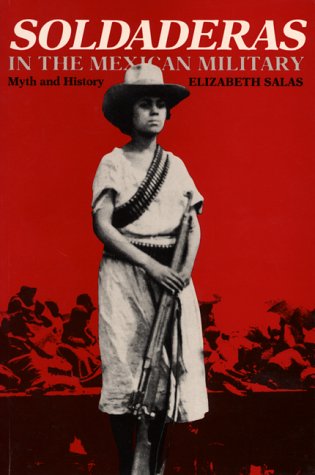
Soldaderas in the Mexican Military
by Elizabeth Salas
"Myth and History"
Popularity
3.11 / 5
* A book's popularity is determined by how it compares to all other books on this website.
Where to buy?
Buy from Amazon* If you buy this book through the link above, we may receive a small commission at no extra cost to you.
Soldaderas in the Mexican Military by Elizabeth Salas
Details
Perspective:
Researcher
Biography:
No
Region:
North America
Page Count:
200
Published Date:
1990
ISBN13:
9780292776302
Description
Brief Summary
"Soldaderas in the Mexican Military" by Elizabeth Salas offers a comprehensive exploration of the roles that Mexican women have played in military contexts from pre-Columbian times to contemporary society. Salas delves into the experiences of these women, known by various titles such as soldaderas and Adelitas, illustrating their contributions both on and off the battlefield. The book highlights their participation in armed conflicts and their symbolic representation in Mexican and Chicano culture through various mediums, including literature and film. By examining military records, anthropological studies, and oral histories, Salas presents a nuanced narrative that challenges traditional stereotypes associated with women in war.
Main Themes and Topics
Central themes in "Soldaderas in the Mexican Military" include the exploration of gender roles and their evolution within the military context, as well as the societal perception of women warriors. Salas addresses how women have historically been marginalized or romanticized within military narratives and works to uncover the true scope of their involvement and influence. Another major theme is the cultural symbolism of the soldadera, as Salas examines how these women are depicted in various artistic expressions and what these depictions reveal about cultural attitudes toward gender and heroism.
Writing Style and Tone
Elizabeth Salas employs a scholarly yet accessible writing style that balances academic rigor with engaging storytelling. Her tone is both informative and respectful, remaining sensitive to the historical and cultural contexts of her subjects. She effectively weaves together factual research with personal narratives gathered from oral histories, creating a vivid tapestry that invites readers to reconsider previously held notions about gender roles in Mexican military history.









